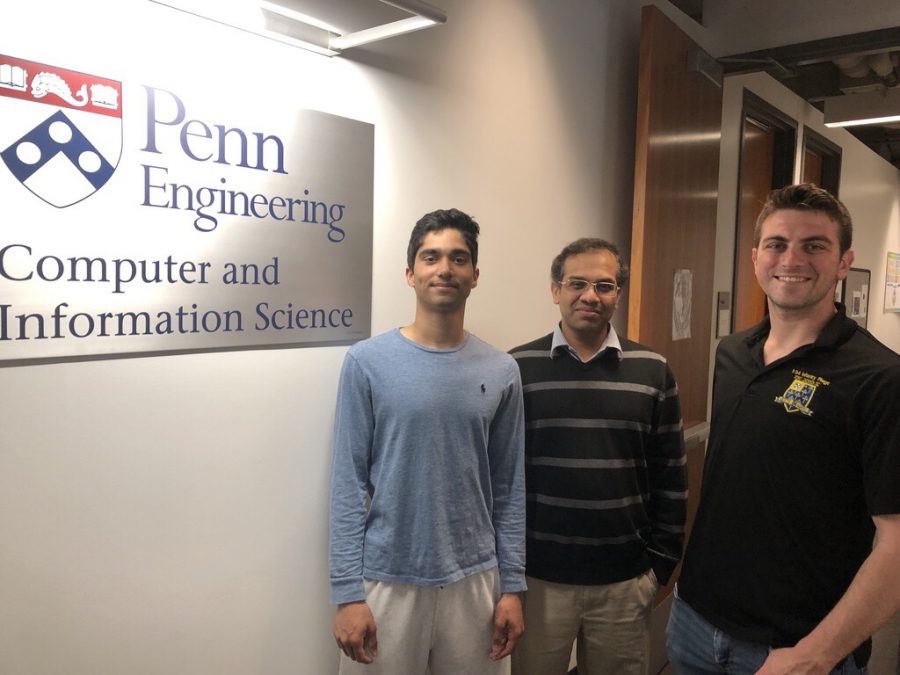North Penn’s Neelay Velingker developing modern technological solutions
Neelay Velingker, Mayur Naik, and Brian Heath at the University of Pennsylvania.
North Penn senior Neelay Velingker had the once in a lifetime opportunity to submit his paper “PolyDroid: Learning-Driven Specialization of Mobile Applications” to the European Software Engineering Conference and Symposium on the Foundations of Software Engineering (ESEC/FSE). Velingker began working on this project back in August with Brian Heath (Masters student at University of Pennsylvania), Osbert Bastani (University of Pennsylvania Professor), and Mayur Naik (University of Pennsylvania Professor) in the Computer Science Department at Penn. Their project was sponsored by the Office of Naval Research.
“There is so many great people at Penn, it ways always eye-opening to get someone’s opinion. Everyone is very collaborative in the Penn Computer Science Department and likes to help each other out,” Velingker shared.
Velingker and the PolyDroid Team’s program was inspired by Google’s Building for Billions, where Google reaches out to markets where there isn’t access to the best technology or reliable networks. Google is trying to encourage developers to tailor their apps to work in developing countries.
“When we first looked at this initiative we thought their approach may be too general, and that developers wouldn’t want to maintain multiple versions of their apps. This is especially true for small developers; it’s counterproductive to make apps for developing countries as there’s relatively little reward. That’s where our solution comes in,” explained Velingker.
The PolyDroid Team’s solution is like a plugin for modern android apps which developers can add to their existing code. It uses machine learning to learn how to balance how much should be removed from an app. This solution is still theoretical, but the team is currently working to bring it to production.
“In general, this a difficult problem to solve because apps can be very different from each other. We began attempting to solve this by creating a data set in which we took open source apps and reduced each of them in some way.” Velingker said.
By making reductions on these open source apps, the team had 100s of new combinations. They then ran surveys where they asked if people would still be willing to use the application even with the reductions. The team combined the results with the data from the apps and came up with a machine learning model. The team learned that 20 apps was not very reliable, and the machine learning program has to learn based on every new app it gets to be able to develop the model, which is why active learning was implemented.
“When we were only using the 20 apps, our model was only able to predict 67.7% of the optimal ratings that the program gave each configuration. After 3 active learning queries, the model got up to 90% accuracy.” explained Velingker.
The program can now take a new app and configure it based on the user’s priorities (battery, network, and memory) to give them the optimal app version.
This program is explained in a paper submitted to ESEC/FSE, which is hosting the conference held in Tallinn, Estonia in August. The PolyDroid team will find out in May if their paper was accepted. If accepted, Neelay will be the first high school student to have a paper in this international conference.
“It’s been one of the greatest opportunities I’ve ever had and an amazing learning experience. This is a great problem with the potential for real world impact, and that’s what excites me most” shared Neelay.



Elon Musk • Apr 4, 2019 at 3:36 pm
Wow I am very impressed with this work.